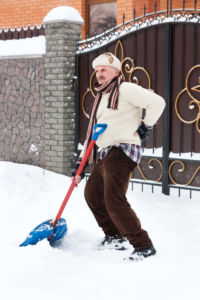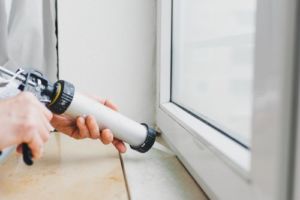Winter can be a stressful time of year for many people. The colder weather can bring on many logistical challenges that can threaten your home, your personal safety, and even your wallet. Consider the following tips to help prepare your body and home for the coming winter months.
Upgrade your Insulation
When it comes to making sure your home remains warm throughout the winter, insulation is very important and has a number of applications in your home. When it starts getting cold, the first thing many people think of is raising the thermostat. This is a natural, but potentially very costly solution. But if the insulation in your home is particularly poor, much of the extra heat you may think you are getting is likely escaping from the windows or the doors. And in fact, secure insulation may even mean you do not need to turn your thermostat up quite so much. Examine your windows to see if there are apparent gaps where the air is escaping.
You may even feel a draft. If an outside facing door is not a perfect fit, it may also be an area where warm air is escaping from your home. These gaps can be sealed with caulk, a waterproof filler and sealant. This substance is applied with a specialized “gun,” and you may hire a professional to administer the repairs though this can become costly. A caulking gun can be easily obtained at most hardware stores to do yourself, though many find this an acquired skill, and improper caulking can create a mess.
Consider practicing on some scrap surfaces before going for the real thing. One possible compromise is rubber weather sealing tape, which typically comes in a roll of hose prepared with an adhesive. This is a cheap alternative that is generally not noticeable when applied, though if you need to remove it, there may be sticky residue or damage to any painted surface it was used on.
One other thing you can apply to your windows or doors is a draft snake. These are fabric tubes that are stuffed with foam or small beads and placed on a window sill or under a door to block out cold air. Some of these are designed to have a tube on both sides of the window or door for more coverage. Draft snakes are available at many home goods stores, though it can also make for an inexpensive DIY project, needing only fabric, something to stuff the tube with, and a sewing machine.

Equipment for Ice and Snow
As we enter winter, there may be a chance for inclement weather. Ice and snow can be a literal headache to deal with around your home. Not only can it be uncomfortable to navigate, but icy surfaces can open you up to the risk of injury or worse. Check that you have a snow shovel and that it is in good repair. If the blade is too damaged or worn out, trying to make it work in a snowy situation may be more dangerous than necessary. If you find ice melt or salt useful for your walkways and driveways, make sure you have a sack available with a paper or plastic cup for ready application. If your vehicle is forward wheel drive only and is prone to fishtailing, you might want to consider sandbags or some similar form of ballast as a countermeasure.
If temperatures in your area plunge exceptionally low in winter, check the liquids in your vehicle, including specialized washer fluid that is resistant to freezing when applied to your windshield. Snow blowers can be undoubtedly noisy, but if you have one at your disposal, make sure you have ample supply of the correct fuel for it. There’s no feeling quite like peering into an empty gas can and realizing the roads are in no condition for you to resupply at that very moment.
Another thing to check for is having your winter clothes ready, particularly boots. If you have a pair, be sure to examine the soles. If they are too worn, they can actually make stepping on ice more dangerous than normal.

Get your Back Ready
Despite all your preparations, you will likely need to engage the cold weather season physically. The snow will not shovel itself off the walk, after all. Even trying to keep your balance while carefully navigating icy terrain can be very taxing on the legs. For these reasons, you may want to consider some core and leg exercises to make sure you are amply prepared for any physical demands the season may make of you. Also, be mindful of proper form while displacing precipitation off of your property. As the snow gets wet and packs, it can become surprisingly heavy. Make sure you are lifting with your legs so as not to injure your back.
For some, winter is a period where illness tends to occur. If this is a pattern you recognize, consider consulting your doctor in the months leading up to winter. They can recommend adjustments you can make to your daily routine to better withstand the season, and if necessary, prescribe medication to combat sickness.
One other thing you might consider is consulting a chiropractor. A lot of winter tasks rely on your back, and any pains or misalignment in your spine can make things particularly difficult.
Many also suggest that as the weather gets colder, aches in the joints and back emerge that are not ordinarily a problem during the rest of the year. A chiropractor is specially trained to examine and diagnose maladies of the back and spine, which in turn connects to the nervous system. They can also offer advice on habits and exercises that may help you get through winter more safely, as well as perform any adjustments to your back as needed.
While winter is often a time for holidays and seasonal merriment, it is also rife with seasonal stressors that can quickly derail the occasion. Take stock of the needs of your home, plan a few months in advance, and no matter how hard the wind blows or how much the snow falls, you should be able to easily last until spring arrives.




